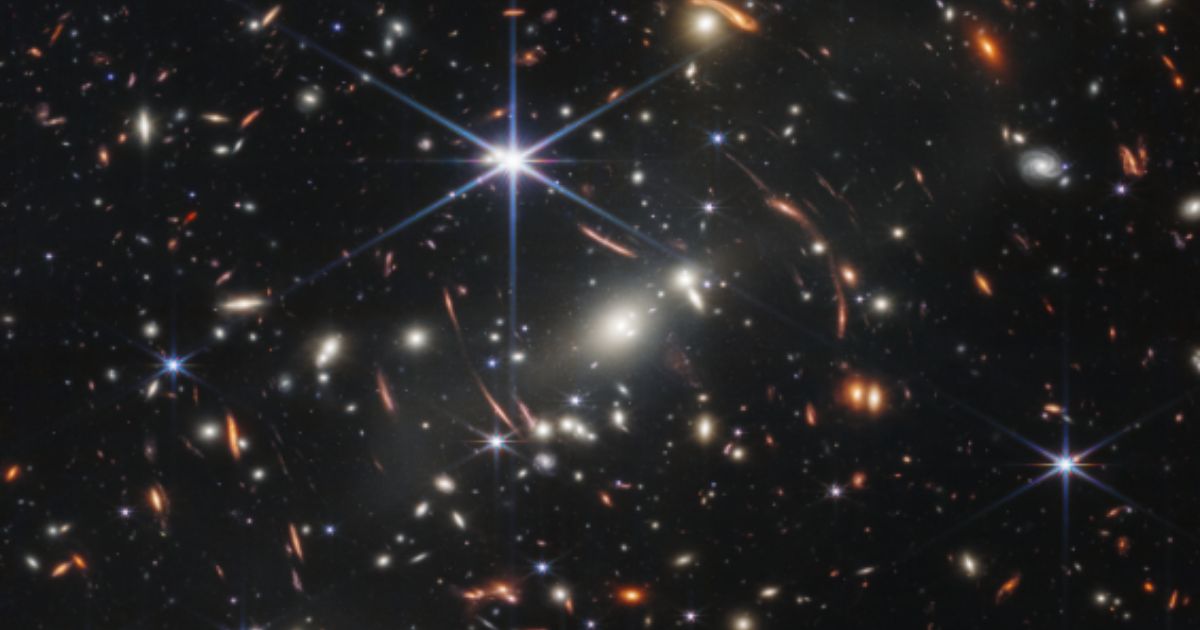The release of an unprecedented series of images from the far reaches of outer space began Monday with the release of the first image from the James Webb Space Telescope.
“We’re going to give humanity a new view of the cosmos,” NASA Administrator Bill Nelson has said, according to PBS. “And it’s a view that we’ve never seen before.”
The image released Monday includes stars, with massive galaxies as well as distant ones.
“Webb can see backwards in time to just after the Big Bang by looking for galaxies that are so far away that the light has taken many billions of years to get from those galaxies to our telescopes,” Jonathan Gardner, Webb’s deputy project scientist, said.
It’s here–the deepest, sharpest infrared view of the universe to date: Webb’s First Deep Field.
Previewed by @POTUS on July 11, it shows galaxies once invisible to us. The full set of @NASAWebb‘s first full-color images & data will be revealed July 12: https://t.co/63zxpNDi4I pic.twitter.com/zAr7YoFZ8C
— NASA (@NASA) July 11, 2022
Part of the image is light scientists estimate is 13.8 billion years old. NASA has set aside a web page where the images can be seen.
“Known as Webb’s First Deep Field, this image of galaxy cluster SMACS 0723 is overflowing with detail. Thousands of galaxies — including the faintest objects ever observed in the infrared — have appeared in Webb’s view for the first time. This slice of the vast universe covers a patch of sky approximately the size of a grain of sand held at arm’s length by someone on the ground,” NASA said on the page.
The images were unveiled at a White House event.
“Today is a historic day,” President Joe Biden said, according to ABC. “It’s a new window into the history of our universe and today we’re going to get a first glimpse of the light to shine through that window.”
“We can see possibilities no one has seen before,” he said, according to The New York Times. “we can go places no one has gone before.”
The James Webb Space Telescope is a collaboration between @NASA, @ESA & @CSA_ASC. The @SpaceTelescope Science Institute is the science & mission operations center for Webb.
Tune in tomorrow at 10:30 am ET (14:30 UTC) as we continue to #UnfoldTheUniverse! https://t.co/GBtitBUMoR pic.twitter.com/Qg8Q54l5Yv
— NASA Webb Telescope (@NASAWebb) July 11, 2022
As Webb “gathers more data in the coming years, we will see out to the edge of the universe like never before,” Priyamvada Natarajan of Yale University said, an expert on black holes and primeval galaxies.
“It is beyond my wildest imagination to be alive when we get to see out to the edge of black holes, and the edge of the universe,” she said.
The $10 billion Webb telescope was launched on Christmas Day and orbits Earth from a million miles away, according to Spaceflightnow.
“This telescope is so powerful that if you were a bumble bee 240,000 miles away, which is the distance between the Earth and the moon, we will be able to see you,” John Mather, the mission’s senior project scientist at NASA’s Goddard Space Flight Center in Maryland, said.
“So what are we going to do with this great telescope? We’re going to look at everything there is in the universe that we can see.”
The next images to be released include a giant gaseous planet from outside our solar system, a nebula where stars are born and five tightly clustered galaxies.
Thomas Zurbuchen, NASA’s science mission chief, said the images can stir emotions in others as they did in the researchers who first saw them.
“It’s really hard to not look at the universe in a new light and not just have a moment that is deeply personal,” he said, according to PBS.
This article appeared originally on The Western Journal.















 Continue with Google
Continue with Google